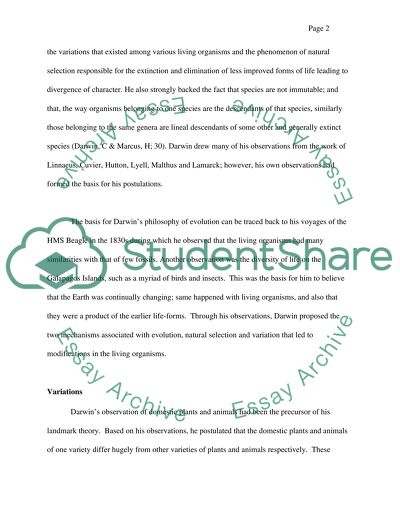Cite this document
(“Discuss the origin and diversity of life.Darwin s evolution theory.how Essay”, n.d.)
Discuss the origin and diversity of life.Darwin s evolution theory.how Essay. Retrieved from https://studentshare.org/miscellaneous/1554404-discuss-the-origin-and-diversity-of-lifedarwin-s-evolution-theoryhow-organisms-evolved-fron-the-simplest-prokaryotes-to-the-more-complex-eukaryoteswhat-structuresfunctions-and-adaptions-they-developed-during-the-course-of-evolution
Discuss the origin and diversity of life.Darwin s evolution theory.how Essay. Retrieved from https://studentshare.org/miscellaneous/1554404-discuss-the-origin-and-diversity-of-lifedarwin-s-evolution-theoryhow-organisms-evolved-fron-the-simplest-prokaryotes-to-the-more-complex-eukaryoteswhat-structuresfunctions-and-adaptions-they-developed-during-the-course-of-evolution
(Discuss the Origin and Diversity of life.Darwin S Evolution theory.How Essay)
Discuss the Origin and Diversity of life.Darwin S Evolution theory.How Essay. https://studentshare.org/miscellaneous/1554404-discuss-the-origin-and-diversity-of-lifedarwin-s-evolution-theoryhow-organisms-evolved-fron-the-simplest-prokaryotes-to-the-more-complex-eukaryoteswhat-structuresfunctions-and-adaptions-they-developed-during-the-course-of-evolution.
Discuss the Origin and Diversity of life.Darwin S Evolution theory.How Essay. https://studentshare.org/miscellaneous/1554404-discuss-the-origin-and-diversity-of-lifedarwin-s-evolution-theoryhow-organisms-evolved-fron-the-simplest-prokaryotes-to-the-more-complex-eukaryoteswhat-structuresfunctions-and-adaptions-they-developed-during-the-course-of-evolution.
“Discuss the Origin and Diversity of life.Darwin S Evolution theory.How Essay”, n.d. https://studentshare.org/miscellaneous/1554404-discuss-the-origin-and-diversity-of-lifedarwin-s-evolution-theoryhow-organisms-evolved-fron-the-simplest-prokaryotes-to-the-more-complex-eukaryoteswhat-structuresfunctions-and-adaptions-they-developed-during-the-course-of-evolution.


